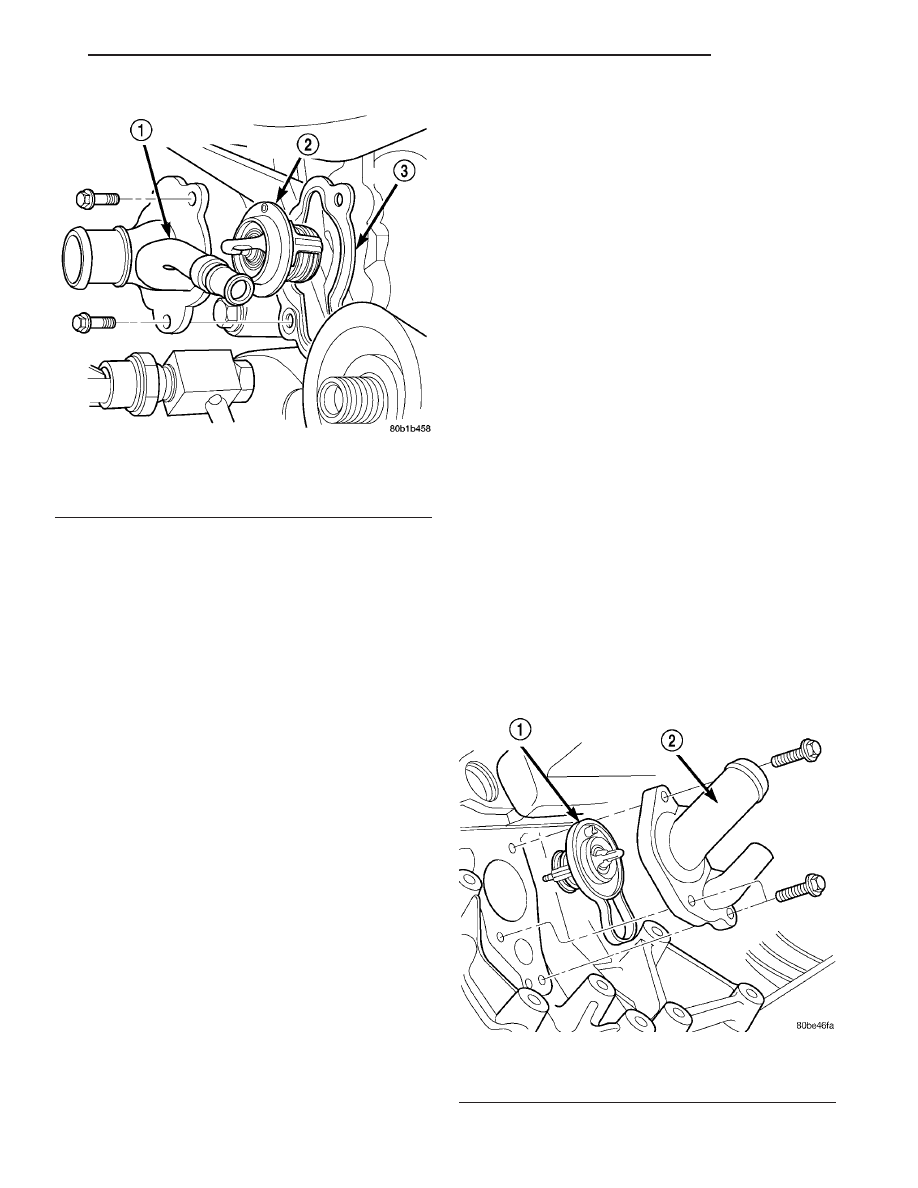Chrysler 300M, Dodge Interpid. Manual - part 52

DIAGNOSIS AND TESTING - ENGINE COOLANT
THERMOSTAT
The thermostat is operated by a wax filled con-
tainer (pellet) which is sealed so that when heated to
a predetermined temperature, the wax expands
enough to overcome the closing spring and water
pump pressure, which forces the valve to open. Cool-
ant leakage into the pellet will cause a thermostat to
fail open. Do not attempt to free up a thermostat
with a screwdriver.
The open too soon type failure mode is included in
the on-board diagnosis. The check engine light will
not be lit by an open too soon condition. If it has
failed open, a DTC diagnostic trouble code will be
set. Do not change a thermostat for lack of heat by
gauge or heater performance, unless a code is
present, (Refer to 7 - COOLING - DIAGNOSIS AND
TESTING) for other probable causes. Failing shut is
the normal long term mode of failure, and normally,
only on high mileage vehicles. The temperature
gauge will indicate this condition.
ENGINE COOLANT
THERMOSTAT - 2.7L
REMOVAL
(1) Disconnect negative cable from remote jumper
terminal.
WARNING: DO NOT REMOVE PRESSURE CAP
WITH THE SYSTEM HOT AND UNDER PRESSURE
BECAUSE SERIOUS BURNS FROM COOLANT CAN
OCCUR.
(2) Drain cooling system (Refer to 7 - COOLING -
STANDARD PROCEDURE).
(3) Remove the engine oil dipstick and tube. To
prevent coolant from entering engine, cover the dip-
stick tube opening in crankcase with a suitable plug.
(4) Raise vehicle on hoist.
(5) Support the engine and remove the left engine
mount (Refer to 9 - ENGINE/ENGINE MOUNTING/
LEFT MOUNT - REMOVAL).
(6) Remove generator support strut.
(7) Disconnect generator electrical connector.
(8) Remove the transaxle dipstick tube bracket
attaching bolt.
(9) Remove the lower heater hose tube bracket
bolt.
(10) Remove the lower heater hose from thermo-
stat housing.
(11) Remove radiator lower hose from thermostat
housing.
(12) Remove thermostat housing bolts (Fig. 9).
(13) Remove thermostat and housing.
Fig. 8 THERMOSTAT AND HOUSING - 3.5L
1 - THERMOSTAT HOUSING/COOLANT INLET
2 - THERMOSTAT
3 - GASKET
Fig. 9 Thermostat and Housing - 2.7L
1 - THERMOSTAT AND GASKET
2 - THERMOSTAT HOUSING/COOLANT INLET
LH
ENGINE
7 - 23
ENGINE COOLANT THERMOSTAT (Continued)